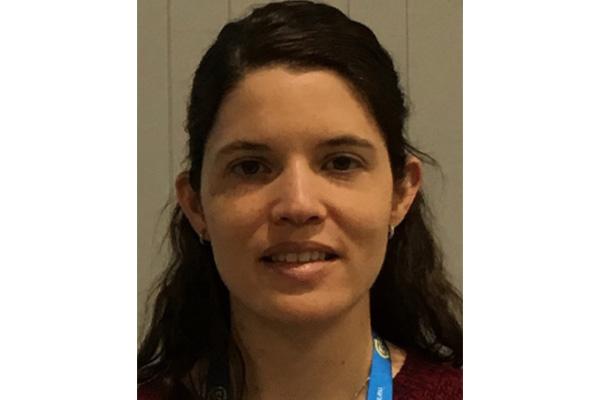
Speaker: Cristina Araya - University of Costa Rica
Seminar Title: Defining the inner boundary of the Guanacaste
Forearc Sliver.
Abstract:
The Central American Sliver is a tectonic block located between the Middle American Trench (MAT) and the Central American Volcanic Arc (CAVA) product of slip partitioning from the oblique subduction of the Cocos plate underneath the Caribbean plate. The motion of the sliver with respect to the Caribbean Plate is 11.3 ±1 mm/yr in Costa Rica, to 16.5 ±1.1 mm/yr in Guatemala (Figure 1). The common hypothesis is that the indentation of the Cocos Ridge is the main force that drives the sliver (e.g, Correa-Mora et al., 2009, Funk et al., 2009, Alonso-Henar et al., 2014).
The boundaries of the forearc were studied in detail from Guatemala to El Salvador and Nicaragua. The CAVA inner boundary has been defined in three segments, where the subducting plate’s obliquity along the MAT also varies. The sliver boundary is generally confined within an area of ∼25 km around the CAVA. The first segment includes the area between Guatemala, El Salvador and Honduras, with predominant arc-parallel structures (∼N45°W), right lateral strike-slip faults and pull-apart extension structures. The second segment is along Nicaragua, where the sliver does not present obvious structures generated by the sliver transport. Here, bookshelf faulting was proposed by La femina et al. (2002) and French et al. (2010). In contrast, Funk et al. (2009) suggest that the sliver slides over the structures parallel to the trench, generated by the Nicaragua Depression in the Pliocene extensional phase, from the extension after the rollback of the subducting slab and the migration of the volcanic arc trench-ward since the Miocene. The last segment is in northern Costa Rica, offshore Nicoya Peninsula. The location of the sliver boundary in Costa Rica was suggested to be between the volcanic arc and the backarc (e.g., Feng et al., 2012), and identified from seismic data and from geological structures near the volcanic arc by Montero et al. (2017).
Our research uses InSAR can help identify the boundary of this last segment and describe where the motion concentrates and if the boundary is a diffuse or a discrete boundary. Multi-temporal time series along the sliver boundary could be used to characterize the active deforming sectors. The velocity rate for the forearc sliver is known to vary from the GPS vector studies. The time series at points along the fault system boundary can help delimit the location of the boundary and determine the rate of motion. Other major strike-slip faults are known, to show creeping behaviour (e.g. San Andreas fault, (Jovilet e at., 2015); the North Anatolian Fault, (Karabacak et al., 2011)) and InSAR would be able to determine whether creep is occurring on this boundary too. Characterization of the change in rate can help discover the source of the motion of the forearc, as this is still an open question in the region.
Host: Demian Gomez, Mara A. Figueroa Berroca and Franco Sobrero
